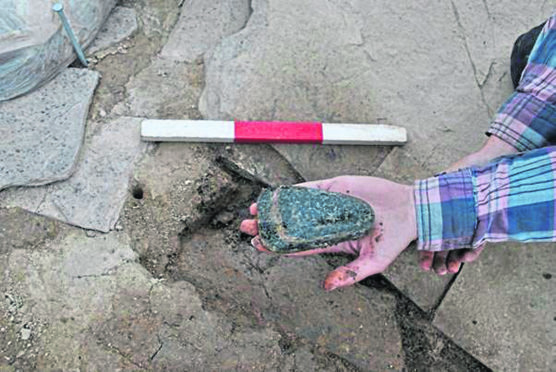Archaeologists in Orkney have uncovered two ‘pristine’ stone axes among more than 30,000 pieces discovered on a dig – bringing them one step closer to shedding light on Neolithical life on the island.
The two polished stone objects were found by archaeologists from the University of the Highlands and Islands Archaeology Institute at the Ness of Brodgar – which dates back more than 5,000 years.
The first axe was uncovered on the shore of Loch of Stenness in a new trench and is the largest of the 30 unique stone axes found on the site. The object is understood to have been heavily used due to the damage sustained at the cutting edge.
Site Director Nick Card, said: “It is nice to find pristine examples of stone axes, but the damage on this one tells us a little bit more about the history of this particular axe.
“The fact that the cutting edge had been heavily damaged suggests that it was a working tool rather than a ceremonial object. We know that the buildings in the complex were roofed by stone slabs so this axe was perhaps used to cut and fashion the timber joists that held up the heavy roof.”
Australian student Therese McCormick, a volunteer on the site, discovered the second object, which has left archaeologists astounded due to its quality of workmanship.
The discoveries are what archaeologists are calling the largest and most important Neolithic excavations in Northern Europe.
Mr Card added: “This axe again tells us a little more about the life of the Neolithic people who built this place.
“There is, in common with the large axe discovered earlier, a great deal of edge damage suggesting that this axe was used extensively as a working tool, but interestingly one of the edges has been re-worked to create a new edge and also both sides are covered in peck marks suggesting that it was also re-used perhaps as a mini anvil.
“This axe, in common with many of the axes found on site, was also placed in a special position within one of the structures opposite the entrance that was aligned east-west to catch the equinox sunrise and in line with Maeshowe. These polished stone axes unearthed at the Ness of Brodgar were clearly multifunctional tools that were not only ‘tools of the trade’ but were also perhaps symbols of power.”
